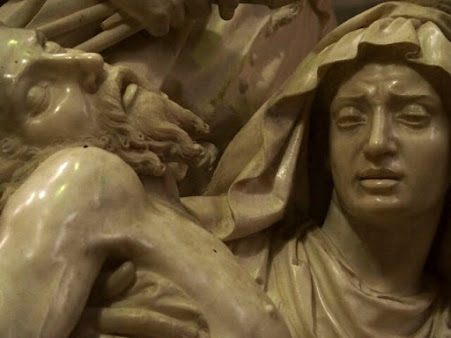Within the annals of Renaissance art, Ippolito Scalza's "Pietà" stands as an entrancing narrative, where the zenith of technical prowess converges with a profound spiritual resonance. Serving as an homage to the maestro Michelangelo, Scalza's opus proffers a distinct perspective on a perennial theme. His rendition emerges as a testament to the artist's adeptness in infusing classical motifs with a distinctive artistic ethos, thereby delineating a narrative both timeless and novel.
The Pietà di Scalza, ensconced within a divergent milieu from its progenitor by Michelangelo, unfolds a tableau of heightened intimacy and personal reflection. Scalza deftly elucidates the poignancy of the moment, casting Mary's countenance in a chiaroscuro of agony and rendering Christ's form with a palpable fragility. Here, the artist's discernment manifests in the meticulous attention to anatomical detail and the judicious manipulation of proportions, crafting a portrayal steeped in emotive nuance.
In Scalza's rendition, the Pietà transcends mere homage, evolving into a synthesis of tradition and innovation. While preserving the sanctity and grandeur inherent to the theme, Scalza interweaves elements emblematic of contemporary artistic currents, thereby imbuing the narrative with a singular perspicacity. Through his discerning lens, the timeless saga acquires new dimensions, resonating with the ethos of its epoch while retaining an enduring universality.
In the oeuvre of Ippolito Scalza, the Pietà emerges not merely as a work of art, but as a profound meditation on the interplay of tradition and innovation. In its nuanced portrayal, the viewer glimpses a confluence of technical virtuosity and spiritual profundity, beckoning them to contemplate the eternal verities enshrined within the human condition.
------------------------------------------------------------------------------------
This work is licensed under a Creative Commons Attribution-No Derivative Works 3.0 Unported License.










.png)


.png)



No comments:
Post a Comment